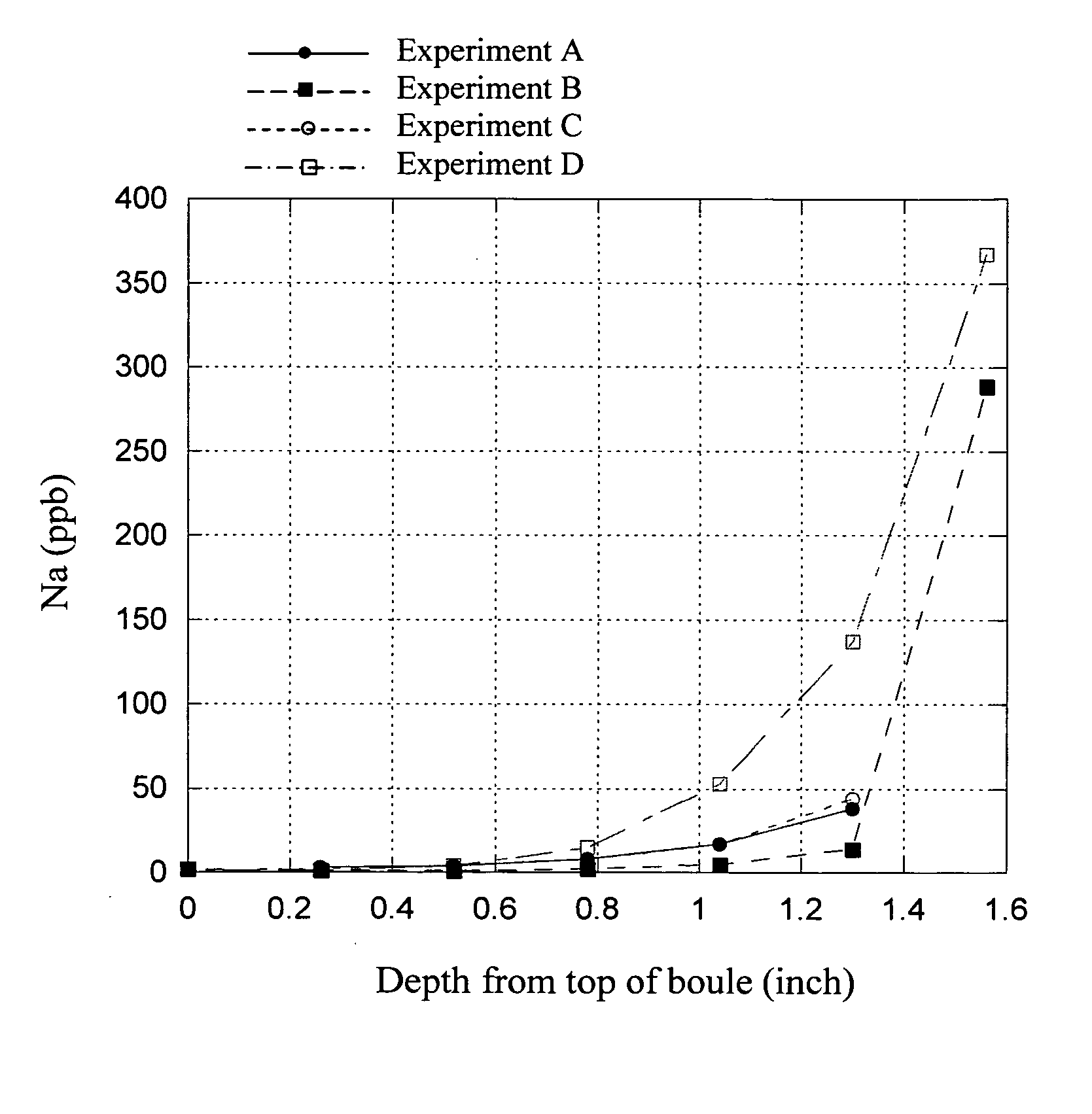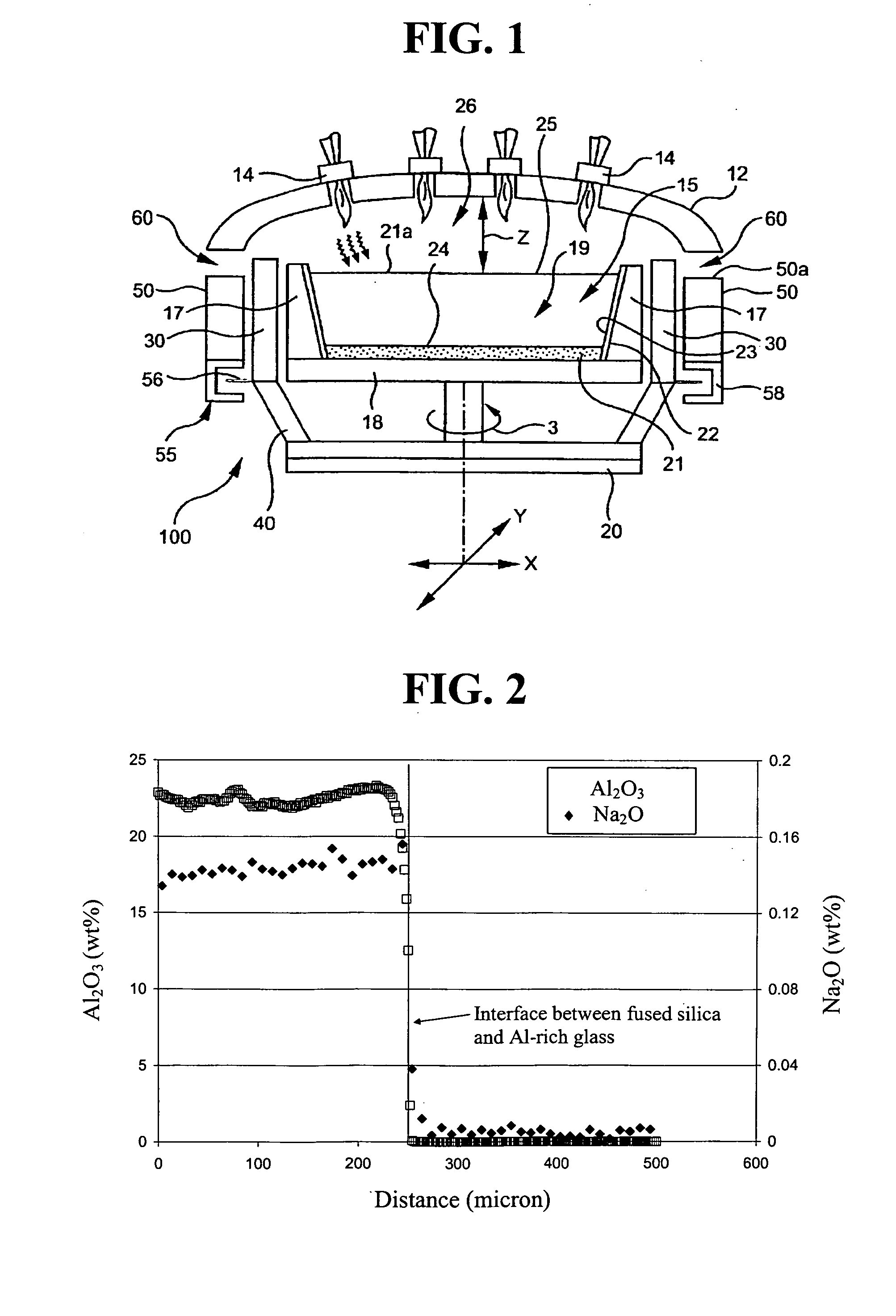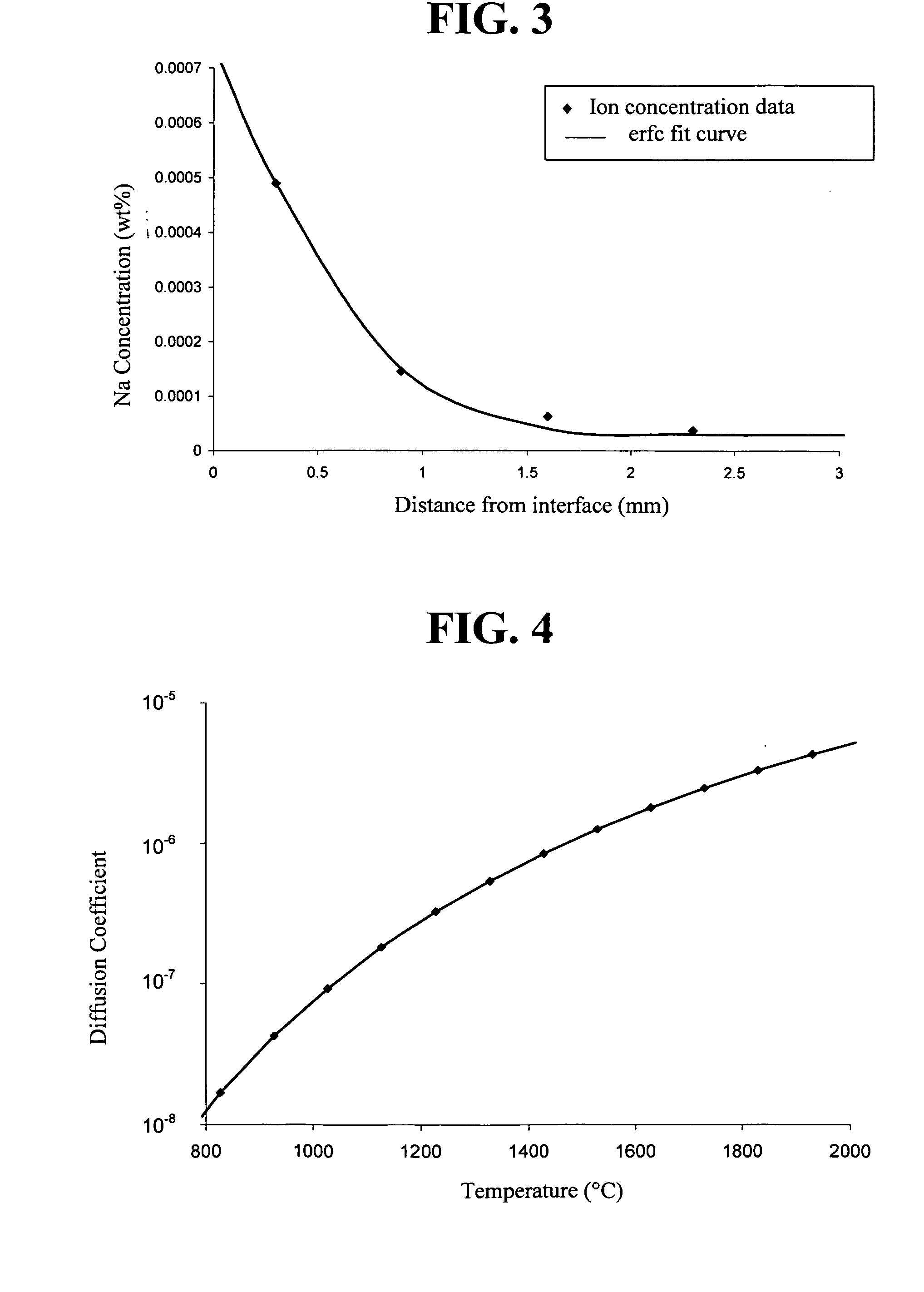Suppressing monovalent metal ion migration using aluminum-containing barrier layer
- Summary
- Abstract
- Description
- Claims
- Application Information
AI Technical Summary
Benefits of technology
Problems solved by technology
Method used
Image
Examples
example 1
This Example shows that sodium ion diffusion is much slower in an Al-rich glass than in fused silica.
A 193 nm-quality HPFS® cylinder having sodium concentration less than 50 ppb was core-drilled to obtain a 2″ diameter boule. The boule was sliced into ¼″ thick disks. One face of the disks was ground to an optical polish. Each disk was leached in a mixture of 5% HCl, 5% nitric acid and 5% HF for 10 minutes in a clean Teflon® beaker inserted in an ultrasonic bath. The leached disks were sonicated 3 more times in triply deionized water, then dried in air on a clean plastic sheet. A calcium aluminosilicate glass (hereinafter “Al-rich glass”) having a composition, in mole percentage, of 63% SiO2, 20.5% Al2O3 and 16.5% CaO, was melted. A patty of the glass was core drilled to produce disks identical in size of the corresponding HPFS® disks, again with one face taken to an optical polish. These Al-rich glass disks were leached and dried as above for the HPFS® disks.
Five grams of sodiu...
example 2
In this example, several bait materials were tested in a single burner refractory furnace for their influence on the sodium concentration of fused silica boule produced.
The single-burner furnace comprises a metal frame holding a 3″ thick refractory ringwall and a rotating center base or turntable. The turntable comprises a refractory sub-base, base and cup. The crown, ringwall, cup, and cup liners are made from zircon refractory. The crown and cup liners have been cleaned through a purification process called calcining which involves heating the refractory to an elevated temperature in a chlorine / helium atmosphere. The turntable rotates and can also be raised and lowered; this controls the size of the gap between the crown and top of the cup, which, in turn, controls the temperature of the glass during forming.
All parameters were duplicated run-to-run as close as possible. The crown refractory can be used for multiple runs. New cup liners are used for each run as they become fu...
experiment b
f crushed zircon were placed in the cup bottom and leveled, followed by 586 grams of crushed OWG bait that was evenly placed directly over the crushed zircon.
PUM
| Property | Measurement | Unit |
|---|---|---|
| Temperature | aaaaa | aaaaa |
| Temperature | aaaaa | aaaaa |
| Temperature | aaaaa | aaaaa |
Abstract
Description
Claims
Application Information
 Login to View More
Login to View More - R&D
- Intellectual Property
- Life Sciences
- Materials
- Tech Scout
- Unparalleled Data Quality
- Higher Quality Content
- 60% Fewer Hallucinations
Browse by: Latest US Patents, China's latest patents, Technical Efficacy Thesaurus, Application Domain, Technology Topic, Popular Technical Reports.
© 2025 PatSnap. All rights reserved.Legal|Privacy policy|Modern Slavery Act Transparency Statement|Sitemap|About US| Contact US: help@patsnap.com



